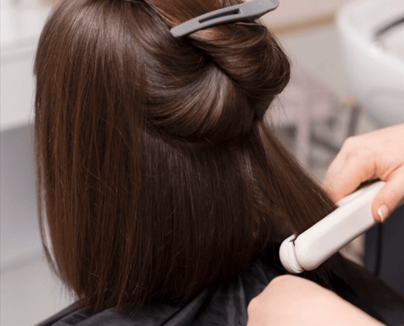Melasma is a challenging pigmentation disorder that affects millions worldwide. South Korea has become a premier destination for melasma treatment, thanks to its advanced dermatological technology, innovative treatments, and highly skilled specialists. If you’re an international patient considering melasma treatment in Korea, it’s important to understand the treatment landscape, what to expect, and how to prepare for your journey.
🌏 Why Choose Korea for Melasma Treatment?
1. Advanced Medical Technology
Korean dermatology clinics use cutting-edge diagnostic tools such as VISIA skin analysis, OBSERV 520 imaging, and Q-switched lasers designed to safely and effectively treat melasma.
2. Personalized Treatment Plans
Korean dermatologists emphasize individualized care, tailoring treatments based on:
- Melasma type (epidermal, dermal, or mixed)
- Skin type and sensitivity (especially Fitzpatrick III–V common in Asian patients)
- Patient’s lifestyle, hormonal status, and medical history
3. Comprehensive Approach
Treatment often combines:
- Topical medications (hydroquinone alternatives, tranexamic acid creams)
- Oral supplements (oral tranexamic acid under medical supervision)
- Light-based therapies (low-fluence lasers, IPL, LED phototherapy)
- Skin barrier repair and sun protection counseling
4. Multilingual Support
Many clinics in Seoul, Busan, and other major cities offer services with English-speaking staff and international patient coordinators, easing communication and logistics.
🛫 What to Expect: Initial Consultation to Follow-Up
Step 1: Pre-Consultation Preparation
- Prepare medical history, including:
- Previous treatments and medications
- Sun exposure habits
- Hormonal or pregnancy history
- Bring photos of your melasma progression if available.
- List any allergies or skin sensitivities.
Step 2: First Visit & Diagnosis
- Korean dermatologists will perform:
- Clinical examination
- Skin imaging (VISIA, OBSERV)
- Possibly Wood’s lamp examination
- Discuss lifestyle and skincare routine.
- The dermatologist may recommend blood tests if hormonal imbalance or other systemic factors are suspected.
Step 3: Customized Treatment Plan
- Based on the diagnosis, a plan is created.
- Expect combination therapies — topical, oral, and procedural.
- Treatment duration varies; expect 3 to 6 months for significant improvement.
Step 4: Ongoing Monitoring & Adjustments
- Follow-up visits track progress with imaging and clinical evaluation.
- Korean clinics emphasize prevention to avoid relapse through education on photoprotection and skincare.
💉 Common Melasma Treatments Offered in Korea
| Treatment Type | Description | Notes for International Patients |
|---|---|---|
| Topical Agents | Tranexamic acid creams, azelaic acid, niacinamide, vitamin C serums | Prescription-only, often included in treatment package |
| Oral Tranexamic Acid | Helps reduce melanin synthesis from inside | Requires medical evaluation; monitored for safety |
| Low-Fluence Laser Toning | Gentle laser to break down pigment without damaging skin | Usually safe for Asian skin; multiple sessions needed |
| Intense Pulsed Light (IPL) | Targets pigmentation and improves skin texture | Best for epidermal melasma; risk of irritation if improperly done |
| Chemical Peels | Mild glycolic or lactic acid peels to enhance exfoliation | Should be done under supervision to prevent post-inflammatory hyperpigmentation |
| Microneedling & PRP | Stimulates skin repair and brightening | Increasingly popular in Korean clinics for resistant cases |
| LED Phototherapy | Reduces inflammation and promotes healing | Often combined with other treatments |
🏥 Top Clinics Popular Among International Patients
| Clinic | Location | Special Features |
|---|---|---|
| Banobagi Dermatology | Seoul | English-speaking doctors, advanced laser treatments |
| Oracle Dermatology | Nationwide | Multidisciplinary care, tailored protocols |
| Renewme Skin Clinic | Seoul, Busan | Digital skin analysis, post-treatment care |
| ME Clinic | Gangnam | Hormone-related melasma expertise |
| ID Hospital Dermatology | Seoul | State-of-the-art facilities, international patient services |
💡 Important Tips for International Patients
1. Plan for Multiple Visits
Melasma treatment is gradual; plan at least 3–6 months in Korea for the best results, including follow-ups.
2. Communicate Clearly
Prepare a list of questions and your skincare goals. Use clinic translators if necessary.
3. Sun Protection Is Critical
Korean clinics provide thorough sun protection counseling. Invest in high-quality SPF 50+ PA++++ physical sunscreens readily available in Korea.
4. Understand the Costs
Melasma treatments vary in price. Expect to pay for:
- Initial consultation and imaging
- Prescription topical and oral medications
- Procedural sessions (laser, IPL, peels)
- Follow-up visits
Many clinics offer packages or international patient discounts.
5. Post-Treatment Care
Adhering to prescribed skincare and avoiding sun exposure is essential to prevent relapse.
⚠️ What You Should Watch Out For
- Avoid clinics that guarantee “complete cure” — melasma is chronic and management-focused.
- Be cautious of aggressive laser treatments not suited for your skin type.
- Ensure prescribed oral medications are supervised by a qualified dermatologist.
- Discuss all medications or supplements you take to avoid interactions or pigmentation triggers.
🌟 Patient Testimonials from International Visitors
“After struggling with melasma for years, I finally found effective treatment at a Seoul clinic. The combination of laser toning and tranexamic acid worked well, and the staff were very supportive despite my limited Korean.”
— Maria, Spain
“Korean dermatologists took my hormonal history seriously and coordinated care with my OBGYN. My pigmentation is much lighter, and I feel confident going out without heavy makeup.”
— Aisha, UAE
🗓️ How to Schedule Your Appointment
- Most top clinics accept online reservations via websites or international patient coordinators.
- Early booking is recommended, especially during peak medical tourism seasons (spring and fall).
- Many clinics offer teleconsultation services before you arrive.
📝 Final Thoughts
Korea offers world-class melasma care blending advanced technology, personalized medicine, and holistic patient support. International patients benefit from tailored treatments that respect Asian skin sensitivities and cultural preferences.
If you’re ready to start your melasma treatment journey in Korea, prepare well, choose reputable clinics, and prioritize consistent follow-up for the best long-term outcomes.




